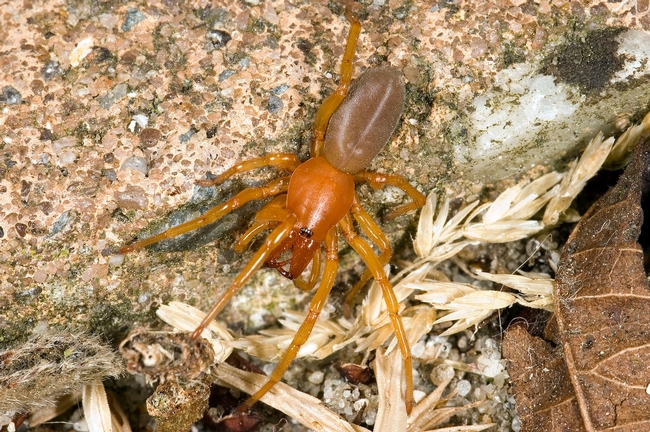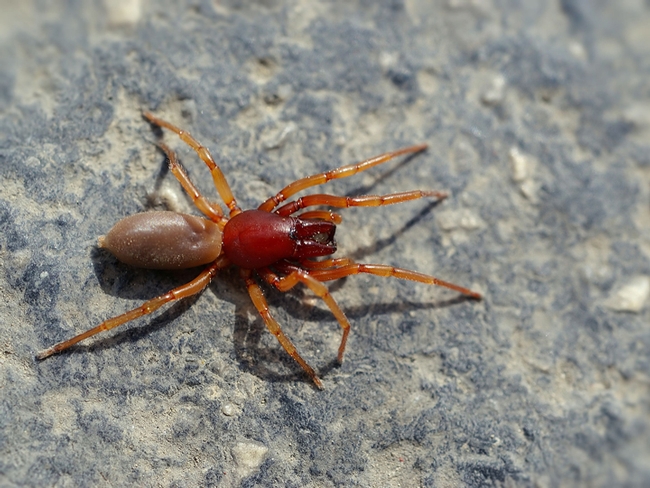Just a hoax. A fear-mongering hoax.
A so-called Facebook "public service announcement" on Aug. 21 that warned of a “new deadly spider species” spreading across the United States went viral, but it was all fake news. The images that the South Carolina man posted are of a woodlouse spider, Dysderca crocata, and it's neither new nor deadly to humans.
Unfortunately, many gullible people--probably many who cringe at the very sight of a spider!--believed the hoax. And even more unfortunately, the post went viral.
The South Carolina resident posted the "public service announcement" in all caps:
“THE SPIDER FROM HELL. FIVE PEOPLE HAVE DIED THIS WEEK DUE TO THE BITE OF THIS DEADLY SPIDER .THIS SPIDER WAS FIRST SEEN IN SOUTH CAROLINA IN JULY SINCE THEN IT HAS CAUSED DEATHS IN WEST VIRGINIA ,TENNESSEE AND MISSISSIPPI. ONE BITE FROM THIS SPIDER IS DEADLY. US GOVERNMENT WORKING ON AN ANTI VENOM AT THIS TIME PLEASE MAKE YOUR FAMILY AND FRIENDS AWARE.”
“This beast, Dysderca crocata, has been in most of North America for decades,” Art Shapiro, distinguished professor of evolution and ecology at the University of California, Davis, told us. “That includes California. It occurs mostly around buildings, especially if there is a mulched garden where its primary prey, isopods (rolypolies, pillbugs), live. I've had it at my place for years, but the number of pillbugs went way down during the drought and I haven't seen the spider lately."
“Needless to say, its bite is not lethal," Shapiro pointed out. "It has very large chelicerae and displays them menacingly if annoyed. According to the literature, bites (really rare) cause brief pain and occasionally local dermatitis, nothing more.”
Snopes.com, the fact-checking site, declared it a hoax on Aug. 21, a day later, but not before the damage was done. Today the Entomological Society of America (ESA) tweeted “FACT CHECK: Did a 'New Deadly Spider' Species Kill Several People in the U.S. in the Summer of 2018?” ESA answered the question succinctly: “Spoiler alert: No, it did not.”
No. It. Did. Not.
Snopes wrote: “Invasive and exotic animals have long been common subjects of scarelore, and messages alerting readers to the supposed threat posed by some new or previously unheard-of species often spread like wildfire across message boards, social networks and email inboxes. These posts typically take the form of a 'public service announcement' and are shared in good faith, and without hesitation, by people who sincerely wish to alert their friends and loved ones to an unfamiliar threat. For these reasons, the 'dangerous animal alert' is also a frequent source of misinformation, deliberate scare-mongering, or even downright trolling.”
It's a good idea to question these kinds of Facebook posts (note: where are you, Facebook monitors?)
Wikipedia informs us that "The woodlouse spider, Dysdera crocata, is a species of spider that preys primarily upon woodlice. Other common names refer to variations on the common name of its prey, including woodlouse hunter, sowbug hunter, sowbug killer, pillbug hunter and slater spider."
"Female specimens are 11–15 mm (0.43–0.59 in) long, while males are 9–10 mm (0.35–0.39 in).They have six eyes, a dark-red cephalothorax and legs, and a shiny (sometimes very shiny) yellow-brown abdomen. Notably, they have disproportionately large chelicerae for a spider of this size."
Native to the Mediterranean area, the woodlouse spider is found throughout much of the world, including North and South America, South Africa, Australia and New Zealand. It's found "under logs, rocks, bricks, and in leaf litter in warm places, often close to woodlice," Wikipedia relates. "They have also been found in houses. They spend the day in a silken retreat made to enclose crevices in, generally, partially decayed wood, but sometimes construct tent-like structures in indents of various large rocks. Woodlouse spiders hunt at night and do not spin webs."
There. You. Have. It.
"Too weird," commented Lynn Kimsey, director of the Bohart Museum of Entomology and professor of entomology at UC Davis, who fields lots of questions about insects and arachnids. "Funny that they picked this spider. Its ferocious looking but tiny and probably couldn't bite you even if it wanted to."
Sadly, Arachnophobia, or the extreme or rational fear of spiders, is very real--unlike the disturbing hoaxes that keep popping up on the Internet.
Attached Images:

The woodlouse spider, Dysderca crocata, is neither a new species nor deadly, contrary to a Facebook hoax disguised as a public service announcement. (Photo by Michel Vuijlsteke, courtesy of Wikipedia)

This is a male woodlouse spider, Dysderca crocata. (Photo © Hans Hillewaert, courtesy of Wikipedia)